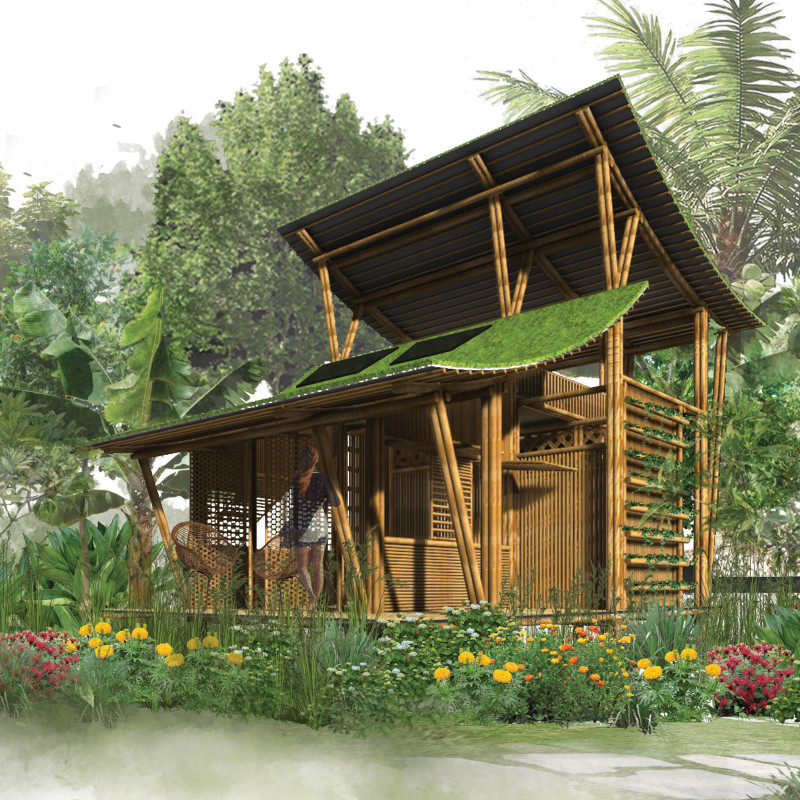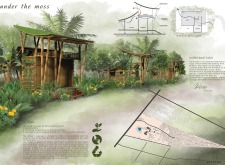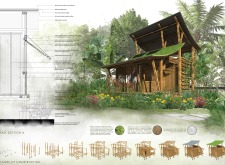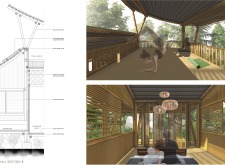5 key facts about this project
Sustainability and community engagement are integral to the project's framework. The design incorporates locally sourced materials, emphasizing the use of bamboo and rice husk particle boards, reflecting a commitment to ecological responsibility. These choices not only reduce the environmental footprint but also support local economies through job creation.
Modular cabins form the core of the retreat, allowing for a series of flexible spaces designated for yoga, meditation, and relaxation. The architectural layout is designed to facilitate a seamless interaction between indoor and outdoor environments, encouraging a sense of tranquility and connection to nature.
Utilization of Unique Design Approaches
The project's design employs a distinctive approach to climate adaptation. Each cabin is equipped with a green roof comprised of moss, which significantly reduces heat absorption and promotes biodiversity. This feature is not solely functional; it enhances the aesthetic appeal of the structures, allowing them to blend into the lush landscape.
The cabins are strategically positioned to maximize ventilation and natural light while providing a sense of privacy. Key features include an elevated yoga deck offering panoramic views, outdoor bathing facilities designed to enhance the connection to nature, and communal areas that foster social interactions without compromising individual privacy.
The architectural plans detail the careful consideration given to spatial organization. Winding paths connect the cabins and communal spaces, encouraging exploration and interaction with the surrounding ecosystem. This layout promotes a sense of well-being and mindfulness, aligning with the retreat's purpose.
Focus on Materiality and Construction Techniques
The material choices further distinguish the project, reflecting a commitment to innovation in sustainable architecture. Bamboo serves as both a primary structural element and a material of choice for its renewability and strength. The use of rice husk particle boards represents an effective upcycling technique, transforming agricultural waste into functional building components. Metal roofing is employed for durability, while woven panels are utilized for both privacy and natural light filtration.
The design is informed by a response to local cultural practices and construction methods. Engaging local labor not only provides employment opportunities but also integrates traditional techniques into the modern architectural context, resulting in a design that is both contemporary and culturally resonant.
For those interested in a detailed exploration of the architectural plans, sections, and innovative design ideas behind "Under the Moss," further investigation into the project presentation is encouraged. Understanding the nuances of its design and implementation can offer valuable insights into sustainable architectural practices.


























